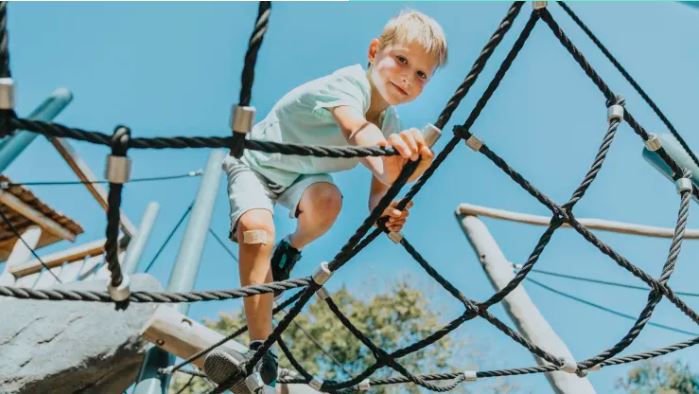
When I began my career teaching at-risk children, most of my students lived in poverty, suffered abuse, or were challenged by learning, emotional or physical disabilities. I wanted to find ways to help them succeed.
As an educational psychologist, I learned a very important lesson: Thrivers are made, not born. Children need safe, loving and structured childhoods, but they also need autonomy, competence and agency to flourish.
After combing through piles of research on traits most highly correlated to optimizing kids’ thriving abilities, I identified seven skills kids need to boost mental toughness, resilience, social competence, self-awareness and moral strength — and they are what separates successful kids who shine from those who struggle:
1. Self-confidence
Most parents equate self-esteem with self-confidence. They tell their kids “You’re special” or “You can be anything you want.”
But there’s little evidence that boosting self-esteem increases academic success or even authentic happiness. Studies do show, however, that children who attribute their grades to their own efforts and strengths are more successful than kids who believe they have no control over academic outcomes.
Real self-confidence is an outcome of doing well, facing obstacles, creating solutions and snapping back on your own. Fixing your kid’s problems or doing their tasks for them only makes them think: “They don’t believe I can.”
Kids who have self-assuredness know they can fail but also rebound, and that’s why we must unleash ourselves from hovering, snowplowing and rescuing.
2. Empathy
This character strength has three distinct types: affective empathy, when we share another’s feelings and feel their emotions; behavioral empathy, when empathic concern rallies us to act with compassion; and cognitive empathy, when we understand another’s thoughts or step into their shoes.
Kids need an emotional vocabulary to develop empathy. Here are ways parents can teach that:
- Label emotions: Intentionally name emotions in context to help them build an emotion vocabulary: “You’re happy!” “You seem upset.”
- Ask questions: “How did that make you feel?” “You seem scared. Am I right?” Help your child recognize that all feelings are normal. How we choose to express them is what can get us in trouble.
- Share feelings: Kids need opportunities to express their feelings in a safe way. Create that space by sharing your own emotions: “I didn’t sleep much so I’m irritable.” “I’m frustrated with this book.”
- Notice others: Point out people’s faces and body language at the library or park: “How do you think that man feels?” “Have you ever felt like that?”
4. Integrity
Integrity is a set of learned beliefs, capacities, attitudes and skills that create a moral compass children can use to help them know — and do — what’s right.
Laying out our own expectations is a huge part of the puzzle. But equally important is giving them space to develop their own moral identity alongside and separate from our own.
It also helps to acknowledge and praise ethical behavior when your child displays it so they recognize that you value it. Call out integrity, then describe the action so your child knows what they did to deserve recognition.
Using the word “because” makes your praise more specific: “That showed integrity because you refused to pass on that gossip.” “You showed integrity because you kept your promise to go with your friend even though you had to give up the slumber party!”
5. Curiosity
Curiosity is the recognition, pursuit and desire to explore novel, challenging and uncertain events.
To help kids build curiosity, I like to use open-ended toys, gadgets and games. Give them paint, yarn and popsicle sticks to create constructions. Or offer paper clips and pipe cleaners and challenge your kids to see how many unusual ways they can use them.
Another method is to model inquisitiveness. Instead of saying “That won’t work,” try “Let’s see what happens!” Instead of giving answers, ask: “What do you think?” “How do you know?” “How can you find out?”
Lastly, you read a book, watch a film or just walk by someone, use “I wonder” questions: “I wonder where she’s going.” “I wonder why they’re doing that.” “I wonder what happens next.”









